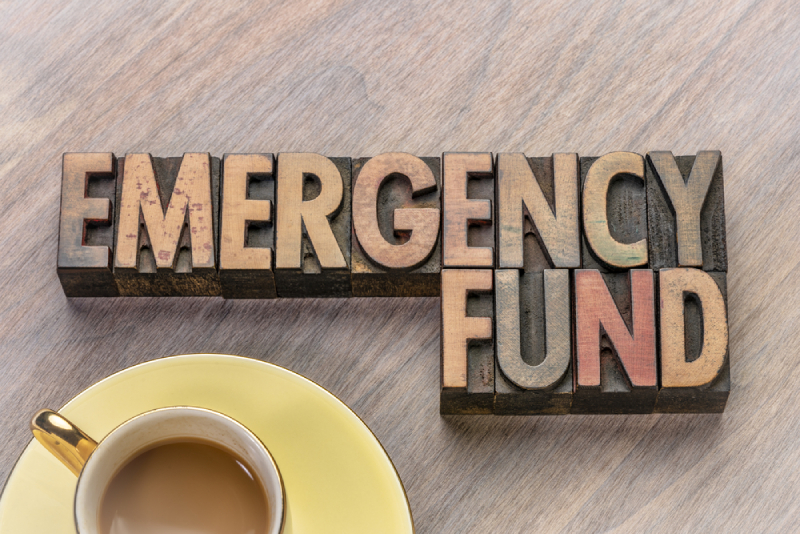Pretty sure I’ve said this before.
I’ll likely say it again, too.
If there’s one thing the past year has taught business owners, it’s that the “unexpected” can occur at any time.
Managing your East Coast business during good times is hard enough; rough times make it all the more difficult.
To get you through the next rough time — and there will be another one — you need to have contingency plans in place. And one of the best ways to protect yourself from economic calamity is to have cash reserves (aka a business emergency fund).
But before we get to that, just a quick reminder that second-quarter estimated tax payments are due June 15. If you operate your business as a sole proprietorship, then you may have an estimated tax payment obligation. Give us a call to discuss this if you haven’t already.
Now, let’s talk about that business emergency fund.
Buccigrossi and Associates’s Tips for Building a Business Emergency Fund
“Luck is what you have left over after you give 100 percent.” – Langston Coleman
Prior to the economic fallout from 2020’s happenings, the typical American small business only had 28 days worth of cash reserves on hand.
Meaning, the average small business in this country couldn’t survive for a full month if revenue was suddenly turned off. As a result, Congress had to prop up small businesses through programs such as the EIDL and PPP loans that you’re sick of hearing about by now.
As the economy rebounds strongly, it’s a good time to set aside a business emergency fund for your East Coast business to tide you over during the next period of economic upheaval. This isn’t doom and gloom thinking, it’s simply the reality of the business cycle: There will be another recession at some unknown point in the future.
You Need To Know How Much Is Enough
In many ways, your business emergency fund follow the same rules that your personal emergency fund should. We typically advise both individuals and businesses to maintain an emergency fund equal to at least three months of expenses. These monies should be held in something like a business savings account, business money market account, or other readily accessible, low-risk account.
What expenses go into that three-month calculation?
Take a look at the income statement that we provide to you, and add up all the recurring expenses for a typical month. Don’t include rare expenses, such as big-ticket repairs, and don’t include sales taxes. But definitely include payroll, payroll taxes, supplies, materials, rent, utilities, fuel, your favorite accountant, and the like. Then, multiply that number by three.
This is going to be your initial target.
After saving three months of cash reserves, I’m then going to encourage you to build up to six months of reserves. But we’ll start with the easier goal first.
How to Actually Save Up the Cash
Building a business emergency fund starts the exact same way as any other savings process: With action and discipline. Successful companies create documented processes to be used for repeating activities, including how revenue is allocated each month.
The biggest tip I can give you is this: Treat your savings goal like any other fixed expense.
For example, if the lease on your office is $5,000 per month, then every month you know you need to cough up that $5,000. The same goes with, say, monthly insurance premiums. It’s a fixed expense that you know you need to budget for every month. Treat the amount that you’re going to stick into the reserve fund every month as a similar fixed expense.
In fact, I’d suggest taking this a step further and set aside your reserves first. Meaning, at the start of each month, sock away whatever fixed amount. It may take you a while to get there, but by paying your emergency fund first each month, it will prioritize this “expense” item for you and help you build resiliency for your business in the long run.
Is it going to take you a while to get there? Yes, it might. As an example, if you have $20,000 per month in base costs to run your East Coast business, your business emergency fund target is $60,000. If you can set aside $5,000 per month, it’s going to take you 12 months to build up your cash reserve. That might sound painful right now, but your business will thank you later.
Once you develop this savings habit in your company, an interesting thing will eventually happen: You’ll get by just fine without spending that money every month.
When to Call Upon Your Reserves
While many Northeast companies and small business owners might have already thought the process out this far, the next step in the process is actually the most difficult. You should create a set of rules for when and how you’ll use the cash reserves.
This business emergency fund shouldn’t be used for non-emergencies, obviously. By having written criteria for when you’ll use it, you’ll avoid the temptation of dipping into it when you shouldn’t.
For example, you might create a written rule that these reserves can only be touched after you’ve done one round of layoffs during a recession. That’s a harsh stance to take, but a necessary one in planning to survive an economic downturn.
By taking the time to create and document the process and having the discipline to treat business emergency fund contributions as a fixed expense that’s non-negotiable, a significant amount of liquidity can be put away for emergencies. In some cases, those funds should remain strictly liquid, but in other cases, having them invested in easily liquidated, low-risk investments can help ensure your money continues to work even when it’s in “reserve.”
Need some help determining how big your business emergency fund should be? Are you looking for other smart ideas to make your East Coast business more resilient in the event of future economic uncertainty? Let’s connect, and put together a workable plan for the future of your business:
To getting things done,
Buccigrossi and Associates






